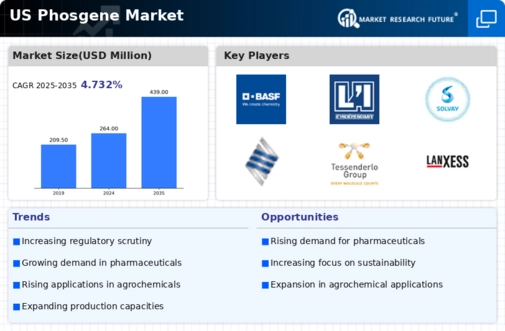The US Phosgene Market displays a complex competitive landscape characterized by various factors such as technological advancements, production capacity, regulatory constraints, and shifting consumer demands. Phosgene is an essential chemical used primarily in the production of isocyanates, polycarbonate plastics, and other specialty chemicals, thus driving demand across several industries, including pharmaceuticals, agrochemicals, and polymers. The competitive dynamics are influenced not only by established players but also by emerging companies striving to gain market share.
This competitive environment invites constant innovation in production techniques and strategic alliances to enhance market positioning and address environmental concerns related to phosgene production and usage.Italbiont has demonstrated a strong presence in the US Phosgene Market, leveraging its established production capabilities and strategic investments in technology. The company's strengths lie in its commitment to quality, operational efficiency, and sustainable practices. With a robust distribution network, Italbiont effectively meets the needs of various industrial sectors while ensuring compliance with regulatory frameworks.
The company’s focus on research and development allows it to adapt to market trends quickly, ensuring that its phosgene-related products remain competitive. Key strengths also include a skilled workforce and strong relationships with suppliers, which enhance its ability to respond to market demands while maintaining product integrity.BASF holds a significant share of the US Phosgene Market, recognized for its extensive portfolio of specialty chemicals, including key products and services that leverage phosgene as a precursor. The company's strengths include a strong market presence due to its vast production facilities and advanced R&D capabilities focused on innovation and sustainability.
BASF has effectively built strategic partnerships through mergers and acquisitions, enhancing its competitive edge while expanding its product offerings. The company’s commitment to sustainability coupled with its established reputation allows it to navigate regulatory landscapes effectively. BASF's strong customer relationships and its ability to deliver customized solutions contribute to its leadership position in the US Phosgene Market, enabling it to adapt to the evolving needs of various industries while maintaining a focus on safety and environmental considerations.

















